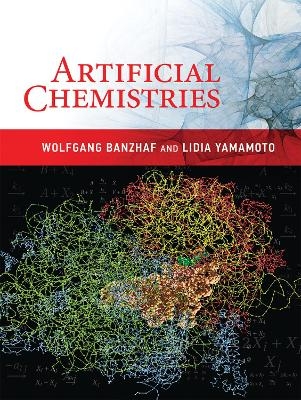
Artificial Chemistries
Seiten
2015
MIT Press (Verlag)
978-0-262-02943-8 (ISBN)
MIT Press (Verlag)
978-0-262-02943-8 (ISBN)
- Titel ist leider vergriffen;
keine Neuauflage - Artikel merken
An introduction to the fundamental concepts of the emerging field of Artificial Chemistries, covering both theory and practical applications.
The field of Artificial Life (ALife) is now firmly established in the scientific world, but it has yet to achieve one of its original goals: an understanding of the emergence of life on Earth. The new field of Artificial Chemistries draws from chemistry, biology, computer science, mathematics, and other disciplines to work toward that goal. For if, as it has been argued, life emerged from primitive, prebiotic forms of self-organization, then studying models of chemical reaction systems could bring ALife closer to understanding the origins of life. In Artificial Chemistries (ACs), the emphasis is on creating new interactions rather than new materials. The results can be found both in the virtual world, in certain multiagent systems, and in the physical world, in new (artificial) reaction systems. This book offers an introduction to the fundamental concepts of ACs, covering both theory and practical applications.
After a general overview of the field and its methodology, the book reviews important aspects of biology, including basic mechanisms of evolution; discusses examples of ACs drawn from the literature; considers fundamental questions of how order can emerge, emphasizing the concept of chemical organization (a closed and self-maintaining set of chemicals); and surveys a range of applications, which include computing, systems modeling in biology, and synthetic life. An appendix provides a Python toolkit for implementing ACs.
The field of Artificial Life (ALife) is now firmly established in the scientific world, but it has yet to achieve one of its original goals: an understanding of the emergence of life on Earth. The new field of Artificial Chemistries draws from chemistry, biology, computer science, mathematics, and other disciplines to work toward that goal. For if, as it has been argued, life emerged from primitive, prebiotic forms of self-organization, then studying models of chemical reaction systems could bring ALife closer to understanding the origins of life. In Artificial Chemistries (ACs), the emphasis is on creating new interactions rather than new materials. The results can be found both in the virtual world, in certain multiagent systems, and in the physical world, in new (artificial) reaction systems. This book offers an introduction to the fundamental concepts of ACs, covering both theory and practical applications.
After a general overview of the field and its methodology, the book reviews important aspects of biology, including basic mechanisms of evolution; discusses examples of ACs drawn from the literature; considers fundamental questions of how order can emerge, emphasizing the concept of chemical organization (a closed and self-maintaining set of chemicals); and surveys a range of applications, which include computing, systems modeling in biology, and synthetic life. An appendix provides a Python toolkit for implementing ACs.
Wolfgang Banzhaf is University Research Professor and Head of the Department of Computer Science at the Memorial University of Newfoundland. Lidia Yamamoto is a former Postdoctoral Researcher at the University of Basel.
| Reihe/Serie | The MIT Press |
|---|---|
| Zusatzinfo | 191 color illus.; 382 Illustrations |
| Verlagsort | Cambridge, Mass. |
| Sprache | englisch |
| Maße | 178 x 235 mm |
| Themenwelt | Naturwissenschaften ► Biologie ► Biochemie |
| Naturwissenschaften ► Biologie ► Evolution | |
| ISBN-10 | 0-262-02943-X / 026202943X |
| ISBN-13 | 978-0-262-02943-8 / 9780262029438 |
| Zustand | Neuware |
| Haben Sie eine Frage zum Produkt? |
Mehr entdecken
aus dem Bereich
aus dem Bereich


